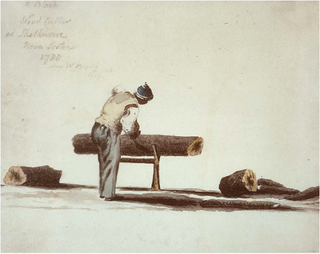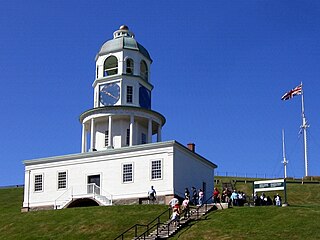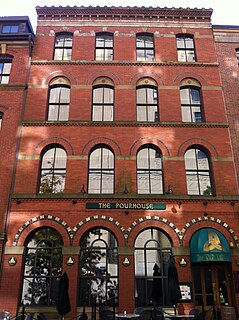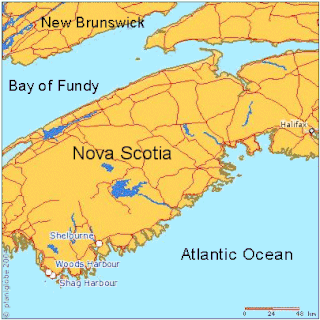 W
WAcadia was a colony of New France in northeastern North America which included parts of what are now the Maritime provinces, the Gaspé Peninsula and Maine to the Kennebec River. During much of the 17th and early 18th centuries, Norridgewock on the Kennebec River and Castine at the end of the Penobscot River were the southernmost settlements of Acadia. The French government specified land bordering the Atlantic coast, roughly between the 40th and 46th parallels. It was eventually divided into British colonies. The population of Acadia included the various indigenous First Nations that comprised the Wabanaki Confederacy, the Acadian people and other French settlers.
 W
WThe Acadian Federation of Nova Scotia was created in 1968 with a mission to "promote the growth and global development of the Acadian and Francophone community of Nova Scotia."
 W
WThe Bill Lynch Show was a carnival that was the largest in Canada during the 1940s. The Carnival was run by business man and philanthropist William Lynch (1903–1972) of McNabs Island, Halifax, Nova Scotia. The Carnival toured the Maritimes for decades.
 W
WBlack Nova Scotians or African Nova Scotians are Black Canadians whose ancestors primarily date back to the Colonial United States as enslaved people or freemen, and later arrived in Nova Scotia, Canada during the 18th and early 19th centuries. As of the 2016 Census of Canada, 21,915 Black people live in Nova Scotia, most in Halifax. Since the 1950s, numerous Black Nova Scotians have migrated to Toronto for its larger range of opportunities. Before the immigration reforms of the 1960s, Black Nova Scotians formed 37% of the total Black Canadian population.
 W
WBluenose Ghosts is a book which presents a series of Nova Scotia ghost stories collected by Canadian folklorist Helen Creighton over a period of 28 years, first published in 1957.
 W
WThe Burying the Hatchet Ceremony happened in Nova Scotia on June 25, 1761 and was one of many such ceremonies where the Halifax Treaties were signed. The treaties ended a protracted period of warfare which had lasted more than 75 years and encompassed six wars between the Mi'kmaq people and the British. The Burying the Hatchet Ceremonies and the treaties that they commemorated created an enduring peace and a commitment to obey the rule of law.
 W
WThe Charitable Irish Society of Halifax is a historic society in Halifax, Nova Scotia which was established in 1786. The Society assists those on low-income and holds other charitable events. Many of the most prominent members of Nova Scotia have been members of the Society.
 W
WIn Canadian ghostlore, the Ghost Ship of Northumberland Strait is a ghost ship said to sail ablaze within the Northumberland Strait, the body of water that separates Prince Edward Island from Nova Scotia and New Brunswick in eastern Canada.
 W
WThe Acadians are the descendants of 17th and 18th century French settlers in parts of Acadia in the northeastern region of North America comprising what is now the Canadian Maritime Provinces of New Brunswick, Nova Scotia and Prince Edward Island, the Gaspé peninsula in eastern Québec, and the Kennebec River in southern Maine. The settlers whose descendants became Acadians primarily came from the southwestern and southern regions of France, historically known as Occitania, while some Acadians are claimed to be descended from the Indigenous peoples of the region.Today, due to assimilation, some Acadians may share other ethnic ancestries as well.
 W
WJoan Carol Jones was a Canadian businesswoman and civil rights activist who was born in the United States and raised in Ontario, Canada. She was married to Black Nova Scotian and internationally known political activist Rocky Jones, whom she influenced to become more active in the issues of black activism causes espoused by Malcolm X and writer James Baldwin, during the black radicalism period of the 1960s. Together they were among the founders of Kwacha House, an interracial youth club in Halifax and were later instrumental in bringing Stokely Carmichael and the Black Panther Party to Halifax. They adopted the radicalized language of the Panthers and organized with Carmichael's help the Black United Front, taking on issues of police brutality, employment and housing discrimination in the black community.
 W
WThe Mic-Mac hockey stick was made originally by the Mi'kmaq people of Nova Scotia, who dominated the international ice hockey market in the early twentieth century. It was first marketed by the Starr Manufacturing Company of Dartmouth, Nova Scotia, in the 1860s.
 W
WThe Miꞌkmaq–Nova Scotia–Canada Tripartite Forum was established in 1997 to provide the Miꞌkmaq, Nova Scotia and Canada a place to resolve issues of mutual concern. The Forum's vision is to develop Mi'kmaw communities and foster positive relationships with other Nova Scotians.
 W
WThe New England Planters were settlers from the New England colonies who responded to invitations by the lieutenant governor of Nova Scotia, Charles Lawrence, to settle lands left vacant by the Bay of Fundy Campaign (1755) of the Acadian Expulsion.
 W
WNew Horizons Baptist Church is a Baptist church in Halifax, Nova Scotia that was established by Black Refugees in 1832. When the chapel was completed, black citizens of Halifax were reported to be proud because it was evidence that former slaves could establish their own institutions in Nova Scotia. Under the direction of Richard Preston, the church laid the foundation for social action to address the plight of Black Nova Scotians.
 W
WThe Novascotian was a newspaper published in Halifax, Nova Scotia, Canada. It became one of the most influential voices in the British North American colonies in its nearly one century of existence.
 W
WThe Roman Catholic Archdiocese of Halifax-Yarmouth is a Roman Catholic archdiocese that includes part of the civil province of Nova Scotia.
 W
WSt. Paul's Church is an evangelical Anglican church in downtown Halifax, Nova Scotia, within the Diocese of Nova Scotia and Prince Edward Island of the Anglican Church of Canada. It is located at the south end of the Grand Parade, an open square in downtown Halifax with Halifax City Hall at the northern end.
 W
WThe Shag Harbour UFO incident was the reported impact of an unknown large object into waters near Shag Harbour, Nova Scotia, a tiny fishing village on the Atlantic coast, on 4 October 1967. The reports were investigated by various Canadian civilian and military agencies as well as the U.S. Condon Committee.
 W
WDavis Day, also known as Miners' Memorial Day is an annual day of remembrance observed on June 11 in coal mining communities in Nova Scotia, Canada to recognize all miners killed in the province's coal mines.